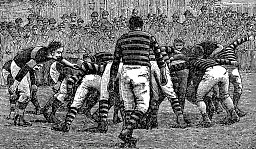Paarden Island and Woodstock Beach

Paarden Eiland (Horses Island) received this name in honour, according to some authorities, of the wild horses or zebras which roamed there in the days of Jan van Riebeeck, or, according to others, of the more familiar donkeys and mules pastured there by the settlers. V an Riebeek’s journals make frequent reference to hunting game in the wilderness around the mouths of the Salt, Black and Diep Rivers, the area now known as Paarden Eiland. The hunters even had to beware of hippopotamus in the rivers! In those days, the Salt River estuary was very wide. The first skirmish between Europeans and the indigenous Khoekhoen took place on Woodstock Beach. In 1510, the Portuguese sea captain, Francisco d’Almeida, came ashore at the Cape and traded with the locals for cattle. According to legend, the Khoekhoen took some of the Portuguese mariners to a vlei on the Cape Flats, where the herders watered their cattle. Arriving unexpectedly, the men surprised a Khoekhoe princess, who was bathing ...


